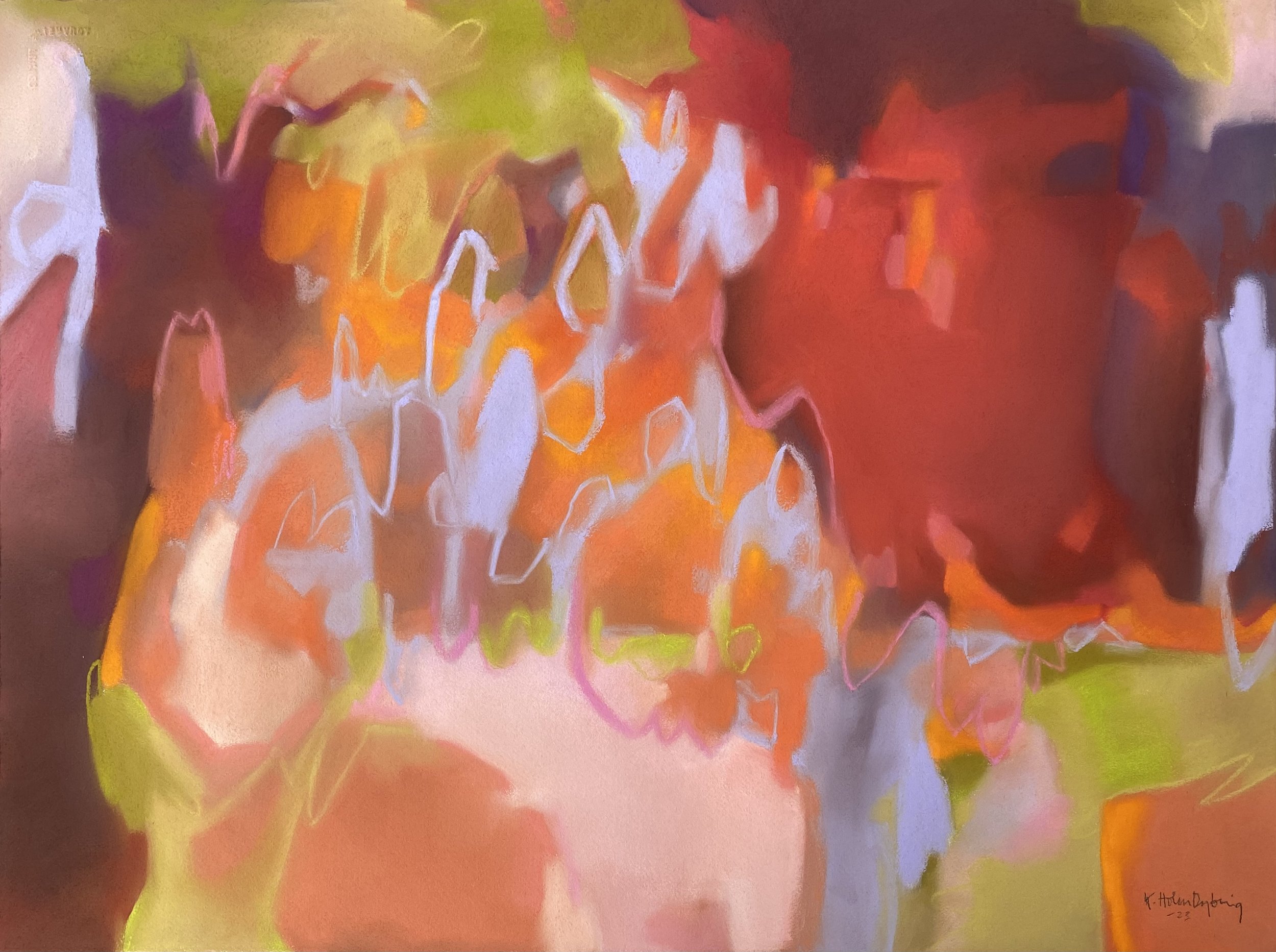Interview by Circle Foundation
Colourful Caprice - Pastels on paper. 22 x 29.9 in.
Kristin Holm Dybvig
Born in: 1963, Norway
Lives in: Stavanger, Norway
Describe your art in three words: Vibrant, suggestive, evocative
Education: Diploma in art therapy from Tobias School of Art, England
Discipline: Drawing
See More Work: https://www.kristinholmdybvig.com
Colourful Caprice - Pastels on paper, 22.0 x 29.9 in.
"I weave colours into poetry and memories to lyrical landscapes."
What themes does your work involve?
My motives are based on memories of magnificent landscapes, great views and beautiful nature, places that I have visited, are surrounded by and that has a significant imprint in my life. The memories can be trigged by fragrance, sounds or photos and come as flashbacks that I use as incentives for my work on paper. The artwork is finished when it tells the story on its own independent premises. I want to share my love for the pristine nature on loan from the coming generations.
Describe your creative process.
I start new artworks by selecting the colours, looking for interesting combinations to express the particular atmosphere I want the artwork to convey, adding more as the work progresses. I start boldly and with a clear intent, with a minimum of planning. I use a sturdy cotton paper that tolerates a lot of changes. My favourite stage is developing the motive, trying out different ideas, techniques and colours to make the composition work. My artworks is simply made by moving, shaping and blending the pastel pigments on the papers surface using hands and fingers, creating all the nuances needed to express the delicate transitions of the light as it envelops the land. The final stage is when the memory, atmosphere and motive goes hand in hand and the artwork has become independent.
What influences your work? What inspires you? Why do you make art?
I am inspired by untouched nature and landscapes without traces of human activity. As part of nature we have the responsibility to protect and manage it on behalf of future generations. It’s important to me to tell the stories of these old landscapes surrounding me, as they set life in perspective. The motives behold the beauty and magnificence of the nature we are rapidly loosing to economical interests and shortsighted profit. They are imbued by a hope that they can contribute to change. The work process elevates the landscape, it becomes a soulscape, expressing moods that the viewer can recognise as they are descriptions of basic human experiences and emotions. Expressing myself through colour on paper speaks directly from soul to soul, without the limitations of words.
What is good art? What makes a piece of art great?
Art is about communication. Its a fantastic non verbal language that has the ability to express compelx emotions and convey difficult thoughts directly to the viewer. From one human being to another, leaving the viewer free to recognice, and use her own abilities to understand and translate it into her own language. Original artworks are powerful human expressions, they are uniqe, genuine and real. When you are confronted with great art this is how you feel, they touch your human core.
What is the role of the artist today?
I think artists have an important role as commentators, critics and visionaries in our society. They represent something real and uniquely human. This is more important than ever in our complex times. Art can reach everybody, it can be a mirror or a provocateur, it can make us remember, contemplate and convey important messages. Contemporary art is the purest human imprint of the present, as it has been through history. It gives a good picture of the times we live in and what is important right now. Artworks can be personal but are elevated by form and context and as such become universal.
